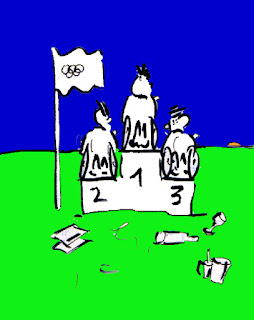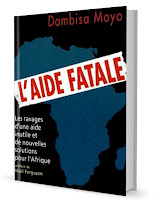Making the invisible visible
 |
| Berlinde Debruyckere |
‘Making the invisible visible’ was the title of the spina bifida conference 2018 in Delhi. I took the same title for my talk on the right to life for children with spina bifida and Hydrocephalus because the untreated children are often not reaching the official statistics. It may concern 80% of the cases world-wide.
 |
| Phot Dieter Telemans |
Our contemporary world looks for ways to get rid of our children. Prenatal selection, high cost of treatment combined with poverty, even euthanasia and primary prevention contribute to make one of the most neglected world health problems invisible. Only primary prevention is ethically clean.
And as long as our children remain invisible, funding for treatment, primary prevention and research will be insufficient.It all depends on each other.
Exclusion, segregation and elimination are ways we cope with what threatens us or what differs from us.
The world mostly turns its headaway and denies pain and suffering.
Those who are not involved run away and the person who suffers is usually left alone. Translated towards spina bifida and hydrocephalus this means; prenatal selection, denying lifesaving treatment, killing the children at birth in The Netherlands and in Belgium even euthanasia when the person with spina bifida is asking for it.
This makes again the problem invisible for the majority of society. Spina bifida and hydrocephalus are ‘a hidden Tsunami’ as they involve worldwide between a half to one million new cases a year.
To wake up society images like this are necessary. This iconic picture put an end to the years of war in Vietnam.
Or this image of the mother's love for Joshua, her untreated child with hydrocephalus in Manila. The child was born two years ago in an academic hospital by a caesarean section because the hydrocephalus was shown on the ultrasound. A hospital where everything was available to help Joshua. But the surgeon sent the parents away without treatment.
When I met Joshua a year later, he had already a head circumference of 95 cm. But the surgeon does not see that anymore. Joshua and his caring parents disappeared behind the closed door of their humble house.
Through my daughter Liesje, who was born with spina bifida and hydrocephalus
Ifaced the same approach.
According to the paediatrician, Liesje would not survive the night, then not a week, then not a month. In the hope she will die, he immediatelylinked her birth with dying and so he destroyed every sparkling of hope.
As a result, Liesje did not receive the treatment that could immediately give her a fair start to life and she became more severely disabled than she was at birth.
The information we got was subjective and built on one sided negative stereotypes on spina bifida. She would never recognize us and had no life expectations.
After three months, Liesje was still alive and were discharged to let her die at home.
We changed hospitals where we got the correct information and Liesje got surgery.
We finally got perspective and hope.
Liesje became a happy child. She went to an ordinary schooland had many friends.
She was playful and had a great sense of humour.
Liesje comforted us in the sense that comfort means "staying with someone else's sadness or suffering.
 |
| Liesje, Leen Pierre and Maarten (photo Mol Mertens) |
" Not running away from it… Liesje didn’t.
Why is the world so afraid of disabilities and differences?
 |
| Adults with spina bifida in Afrika |
Look at this joyful photo of our adults in Africa. The treatment of children with Spina bifida has made huge progress in the past decennia.
However, the medical world had a problem when they understood that children like Liesje, were not dying when treatment was denied of refused.
The outcome of a child with spina bifida has never been so positive as today.
In addition, with the UN Convention on the Rights of Persons with Disabilities,
a legal frame has been established for equal treatment, both in medical care and in society.
 |
| I look for a Lawyer (Pierre Mertens) |
All this is fantastic news, and yet... in Europe more than 90% of pregnancies of unborn children with Spina bifida are terminated prematurely.
As children survived when treatment was denied or refused at birth
the New England Journal of Medicine published the Groningen Protocol in 2005
It describes how 22 children with Spina bifida were killed after they were born
with permission of the department of justice and established guidelines for this procedure.
And now, with the Belgian legislation that regulates euthanasia, a new backdoor is opened and some people with Spina bifida ask themselves to the doctors for their life to be terminated.
Developments in medicine, in legislation, and the accompanying ethical considerations travel parallel at different speeds.
 |
| Jane Doe regulation |
Old negative stereotypes do not match with new developments in treatment.
The history of Spina bifida treatment is therefore also the history of medical ethics. Time is too short to give an complete overviewof this shocking history.
When in 1983, parents in the US refused treatment for their child with Spina Bifida, President Reagan intervened and stated with the “Jane Doe Regulation” that every child has the right to available treatment.
Including children with Spina bifida. In 2018, “Jane Doe” celebrated her 35th birthday.
Through improvements in medical imaging at the end of the 1980’s, Spina bifida and/or Hydrocephalus could be detected relatively early in pregnancy through ultrasound.
Abortion, or termination of pregnancy, even late in pregnancy, resulted in the fact that almost none of our children are born in Europe.
Now a day’s prenatal surgery gives parents new hope and in hospitals where they give this as an option we see that more parents continue their pregnancy.
The quality of information given in prenatal counselling determines the parents’ decision.
Through the systematic elimination of our unborn children with disabilities spina bifida is turning more and more into a disability of the Global South where registration is mostly lackingand where there is often no access to treatment.
For this reason, IF started its projects in developing countries in the mid ‘90s to offer children with spina bifida or Hydrocephalus a fair start in their life’s.
together with our partners we proved that also in the African context
treatment is possible. Some of the first children we supported in Africa are now among the staff members in our projects.
In many countries spina bifida has a bad PR. It leads to a negative cycle
where there is no access to care and surgery resulting negative outcomes of our children confirming negative stereotypes on spina bifida and a loss of hope and believe in our children. This leads worldwide to abortion, institualization
and unmotivated parents and professionals. That’s why they are even not referred to the available surgery.
Only when the results of our care are better we can change this negative cycle into a positive one. Children with a good outcome will result in timely referral and treatment.
 |
| 'they forgot to take us down' |
In the fight for “the right to life” of our children, our organizations stated
that the quality of life of children with Spina bifida depends more on a welcoming and accessible society than on the impairment itself. The inaccessible society is causing more disabilities than the initial impairment. Many studies into the quality of life confirm our stance. It isn’t the disability that determines whether you are happy or not, but how you relate to your disability and how open and accessible society is with regard to your disability.
Two IF resolutions, one on termination of pregnancy and one on the Groningen protocol, were also adopted by the European Disability Forum.
Building on these resolutions, we can state that people with a disability have the same right to life saving treatment as people without a disability.
 |
| Joshua and his mother |
In medicine the main desire is to cure.Most caregivers give up
when a cure is no longer possible. They run away. You must heal, die, or as Joshua, disappear…
Prenatal selection is not a cure, it is eliminating an unborn child with a disability.
You can never cure a disability. Euthanasia means in the case of new-borns with spina bifida killing the child and in adults it means assisted suicide.
In my opinion medicine would gain to stay on the side of life
and accepting death as a part of it. That’s how I understand the Oath of Hippocrates. Denying treatment is not killing but it is refusing a lifesaving opportunity. In many countries, we are legally required to provide assistance when someone is in mortal danger. This is exactly the case in spina bifida and hydrocephalus at birth. By sending parents home without access to surgery and care, the Oath of Hippocrates dares to become the Oath of Hypocrisy.
The right to life is for me the most precious human right, but fighting for this right involves also working on a welcoming and accessible society.
Therefor we have to wake-up the world for this hidden Tsunami. Only then, society will make funds available for treatment, care, research and primary prevention.
 |
| Liesje |
Spina bifida and hydrocephalus deserve as many funds as other world health problems as Ebola and Malaria.
A dream?
No, if we all work together we can wake up society. There is a big role for people with spina bifida, the Mpange’s, the Margo’s, Rebecca’s, the Liesje’s and many others within the IF network.
They make the invisible visible.
They counter the negative stereotypes of spina bifida. Hand in hand with not bypassed research, devoted professionals and caregivers, good and reliable statistics we can work on primary prevention and care to all new-borns.
Like John Lennon said:
“A dream you dream alone is only a dream. A dream you dream together is reality.”
Pierre Mertens, Child-Help International / Global ambassador IF










Reacties
Een reactie posten